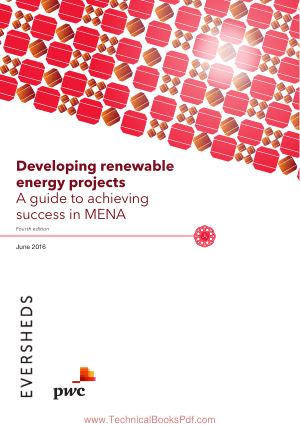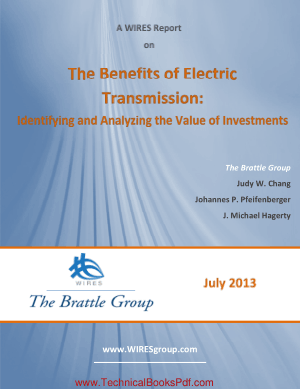Contents
About the Authors ……………………………………………………………………………………………….xv
Chapter 1: An Introduction to Electric Circuits ……………………………………………………….1
1.1 SI Units ………………………………………………………………………………………………………..1
1.2 Charge ………………………………………………………………………………………………………….2
1.3 Force ……………………………………………………………………………………………………………2
1.4 Work …………………………………………………………………………………………………………….3
1.5 Power …………………………………………………………………………………………………………..4
1.6 Electrical Potential and e.m.f. ………………………………………………………………………….5
1.7 Resistance and Conductance ……………………………………………………………………………5
1.8 Electrical Power and Energy ……………………………………………………………………………6
1.9 Summary of Terms, Units and Their Symbols……………………………………………………7
1.10 Standard Symbols for Electrical Components ……………………………………………………8
1.11 Electric Current and Quantity of Electricity ………………………………………………………8
1.12 Potential Difference and Resistance ……………………………………………………………….10
1.13 Basic Electrical Measuring Instruments ………………………………………………………….11
1.14 Linear and Nonlinear Devices ……………………………………………………………………….11
1.15 Ohm’s Law ………………………………………………………………………………………………….12
1.16 Multiples and Submultiples …………………………………………………………………………..13
1.17 Conductors and Insulators …………………………………………………………………………….16
1.18 Electrical Power and Energy ………………………………………………………………………….16
1.19 Main Effects of Electric Current …………………………………………………………………….20
Chapter 2: Resistance and Resistivity ……………………………………………………………………21
2.1 Resistance and Resistivity ……………………………………………………………………………..21
2.2 Temperature Coeffi cient of Resistance ……………………………………………………………25
Chapter 3: Series and Parallel Networks ……………………………………………………………….31
3.1 Series Circuits ……………………………………………………………………………………………..31
3.2 Potential Divider ………………………………………………………………………………………….34
3.3 Parallel Networks …………………………………………………………………………………………37
3.4 Current Division …………………………………………………………………………………………..43
3.5 Relative and Absolute Voltages ……………………………………………………………………..48
Chapter 4: Capacitors and Inductors …………………………………………………………………….53
4.1 Introduction to Capacitors …………………………………………………………………………….53
4.2 Electrostatic Field ………………………………………………………………………………………..53
4.3 Electric Field Strength ………………………………………………………………………………….55
4.4 Capacitance …………………………………………………………………………………………………56
4.5 Capacitors …………………………………………………………………………………………………..56
4.6 Electric Flux Density ……………………………………………………………………………………58
4.7 Permittivity …………………………………………………………………………………………………59
4.8 The Parallel Plate Capacitor…………………………………………………………………………..61
4.9 Capacitors Connected in Parallel and Series ……………………………………………………64
4.10 Dielectric Strength ……………………………………………………………………………………….70
4.11 Energy Stored………………………………………………………………………………………………71
4.12 Practical Types of Capacitors …………………………………………………………………………72
4.13 Inductance …………………………………………………………………………………………………..76
4.14 Inductors …………………………………………………………………………………………………….78
4.15 Energy Stored………………………………………………………………………………………………80
Chapter 5: DC Circuit Theory ………………………………………………………………………………81
5.1 Introduction …………………………………………………………………………………………………81
5.2 Kirchhoff’s Laws …………………………………………………………………………………………81
5.3 The Superposition Theorem …………………………………………………………………………..89
5.4 General DC Circuit Theory ……………………………………………………………………………95
5.5 Thévenin’s Theorem …………………………………………………………………………………….99
5.6 Constant-Current Source ……………………………………………………………………………..106
5.7 Norton’s Theorem ………………………………………………………………………………………107
5.8 Thévenin and Norton Equivalent Networks ……………………………………………………111
5.9 Maximum Power Transfer Theorem ……………………………………………………………..117
Chapter 6: Alternating Voltages and Currents ……………………………………………………..123
6.1 The AC Generator ………………………………………………………………………………………123
6.2 Waveforms ………………………………………………………………………………………………..124
6.3 AC Values …………………………………………………………………………………………………126
6.4 The Equation of a Sinusoidal Waveform ……………………………………………………….133
6.5 Combination of Waveforms …………………………………………………………………………139
6.6 Rectifi cation ………………………………………………………………………………………………146
Chapter 7: Complex Numbers …………………………………………………………………………….149
7.1 Introduction ……………………………………………………………………………………………….149
7.2 Operations involving Cartesian Complex Numbers ………………………………………..152
7.3 Complex Equations …………………………………………………………………………………….155
7.4 The polar Form of a Complex Number ………………………………………………………….157
7.5 Applying Complex Numbers to Series AC Circuits ………………………………………..158
7.6 Applying Complex Numbers to Parallel AC Circuits ………………………………………171
Chapter 8: Transients and Laplace Transforms ……………………………………………………185
8.1 Introduction ……………………………………………………………………………………………….185
8.2 Response of R-C Series Circuit to a Step Input ………………………………………………185
8.3 Response of R-L Series Circuit to a Step Input ………………………………………………192
8.4 L-R-C Series Circuit Response …………………………………………………………………….199
8.5 Introduction to Laplace Transforms ………………………………………………………………205
8.6 Inverse Laplace Transforms and the Solution of Differential Equations …………….215
Chapter 9: Frequency Domain Circuit Analysis …………………………………………………..229
9.1 Introduction ……………………………………………………………………………………………….229
9.2 Sinusoidal AC Electrical Analysis ………………………………………………………………..229
9.3 Generalized Frequency Domain Analysis ……………………………………………………..257
References …………………………………………………………………………………………………315
Chapter 10: Digital Electronics …………………………………………………………………………..317
10.1 Semiconductors ………………………………………………………………………………………….317
10.2 Semiconductor Diodes ………………………………………………………………………………..318
10.3 Bipolar Junction Transistors ………………………………………………………………………..319
10.4 Metal-oxide Semiconductor Field-effect Transistors ………………………………………321
10.5 The transistor as a Switch ……………………………………………………………………………322
10.6 Gallium Arsenide Semiconductors ……………………………………………………………….324
10.7 Light-emitting Diodes …………………………………………………………………………………324
10.8 BUF and NOT Functions …………………………………………………………………………….327
10.9 AND, OR, and XOR Functions ………………………………………………………………….329
10.10 NAND, NOR, and XNOR Functions …………………………………………………………..329
10.11 Not a Lot …………………………………………………………………………………………………331
10.12 Functions Versus Gates ……………………………………………………………………………..332
10.13 NOT and BUF Gates …………………………………………………………………………………333
10.14 NAND and AND Gates …………………………………………………………………………….335
10.15 NOR and OR Gates …………………………………………………………………………………..336
10.16 XNOR and XOR Gates ……………………………………………………………………………..337
10.17 Pass-Transistor Logic ………………………………………………………………………………..339
10.18 Combining a Single Variable With Logic 0 or Logic 1 ………………………………….342
10.19 The Idempotent Rules ……………………………………………………………………………….342
10.20 The Complementary Rules ………………………………………………………………………..343
10.21 The Involution Rules …………………………………………………………………………………344
10.22 The Commutative Rules ……………………………………………………………………………344
10.23 The Associative Rules ……………………………………………………………………………….344
10.24 Precedence of Operators ……………………………………………………………………………345
10.25 The First Distributive Rule ………………………………………………………………………..346
10.26 The Second Distributive Rule …………………………………………………………………….346
10.27 The Simplifi cation Rules …………………………………………………………………………..348
10.28 DeMorgan Transformations ……………………………………………………………………….349
10.29 Minterms and Maxterms ……………………………………………………………………………351
10.30 Sum-of-Products and Product-of-sums ………………………………………………………..351
10.31 Canonical Forms ………………………………………………………………………………………352
10.32 Karnaugh Maps ………………………………………………………………………………………..353
10.33 Minimization Using Karnaugh Maps ………………………………………………………….354
10.34 Grouping Minterms …………………………………………………………………………………..355
10.35 Incompletely Specifi ed Functions ……………………………………………………………….356
10.36 Populating Maps Using 0s versus 1s ……………………………………………………………359
10.37 Scalar Versus Vector Notation ……………………………………………………………………360
10.38 Equality Comparators ……………………………………………………………………………….361
10.39 Multiplexers …………………………………………………………………………………………….363
10.40 Decoders …………………………………………………………………………………………………364
10.41 Tri-State Functions ……………………………………………………………………………………365
10.42 Combinational Versus Sequential Functions ………………………………………………..367
10.43 RS Latches ………………………………………………………………………………………………367
10.44 D-Type Latches ………………………………………………………………………………………..373
10.45 D-Type Flip-Flops …………………………………………………………………………………….374
10.46 JK and T Flip-Flops ………………………………………………………………………………….377
10.47 Shift Registers ………………………………………………………………………………………….378
10.48 Counters ………………………………………………………………………………………………….381
10.49 Setup and Hold Times ……………………………………………………………………………….383
10.50 Brick by Brick ………………………………………………………………………………………….384
10.51 State Diagrams …………………………………………………………………………………………386
10.52 State Tables ……………………………………………………………………………………………..387
10.53 State Machines …………………………………………………………………………………………388
10.54 State Assignment ……………………………………………………………………………………..389
10.55 Don’t Care States, Unused States, and Latch-Up Conditions ………………………….392
Chapter 11: Analog Electronics ………………………………………………………………………….395
11.1 Operational Amplifi ers Defi ned ………………………………………………………………….395
11.2 Symbols and Connections ………………………………………………………………………….395
11.3 Operational Amplifi er Parameters ………………………………………………………………397
11.4 Operational Amplifi er Characteristics …………………………………………………………402
11.5 Operational Amplifi er Applications …………………………………………………………….403
11.6 Gain and Bandwidth …………………………………………………………………………………405
11.7 Inverting Amplifi er With Feedback …………………………………………………………….406
11.8 Operational Amplifi er Confi gurations …………………………………………………………408
11.9 Operational Amplifi er Circuits …………………………………………………………………..412
11.10 The Ideal Op-Amp ……………………………………………………………………………………418
11.11 The Practical Op-Amp ………………………………………………………………………………420
11.12 Comparators …………………………………………………………………………………………….450
11.13 Voltage References……………………………………………………………………………………459
Chapter 12: Circuit Simulation …………………………………………………………………………..465
12.1 Types of Analysis ……………………………………………………………………………………..466
12.2 Netlists and Component Models …………………………………………………………………476
12.3 Logic Simulation ………………………………………………………………………………………479
Chapter 13: Interfacing ……………………………………………………………………………………..481
13.1 Mixing Analog and Digital ………………………………………………………………………..481
13.2 Generating Digital Levels From Analog Inputs …………………………………………….484
13.3 Classic Data Interface Standards ………………………………………………………………..487
13.4 High Performance Data Interface Standards…………………………………………………493
Chapter 14: Microcontrollers and Microprocessors………………………………………………499
14.1 Microprocessor Systems ……………………………………………………………………………499
14.2 Single-Chip Microcomputers ……………………………………………………………………..499
14.3 Microcontrollers ……………………………………………………………………………………….500
14.4 PIC Microcontrollers ………………………………………………………………………………..500
14.5 Programmed Logic Devices ……………………………………………………………………….500
14.6 Programmable Logic Controllers ………………………………………………………………..501
14.7 Microprocessor Systems ……………………………………………………………………………501
14.8 Data Representation ………………………………………………………………………………….503
14.9 Data Types ………………………………………………………………………………………………505
14.10 Data Storage …………………………………………………………………………………………….505
14.11 The Microprocessor ………………………………………………………………………………….506
14.12 Microprocessor Operation …………………………………………………………………………512
14.13 A Microcontroller System …………………………………………………………………………518
14.14 Symbols Introduced in this Chapter …………………………………………………………….523
Chapter 15: Power Electronics ……………………………………………………………………………525
15.1 Switchgear ………………………………………………………………………………………………525
15.2 Surge Suppression …………………………………………………………………………………….528
15.3 Conductors ………………………………………………………………………………………………530
15.4 Capacitors ……………………………………………………………………………………………….533
15.5 Resistors ………………………………………………………………………………………………….536
15.6 Fuses ………………………………………………………………………………………………………538
15.7 Supply Voltages ……………………………………………………………………………………….539
15.8 Enclosures ……………………………………………………………………………………………….539
15.9 Hipot, Corona, and BIL …………………………………………………………………………….540
15.10 Spacings ………………………………………………………………………………………………….541
15.11 Metal Oxide Varistors ……………………………………………………………………………….542
15.12 Protective Relays ……………………………………………………………………………………..543
15.13 Symmetrical Components ………………………………………………………………………….544
15.14 Per Unit Constants ……………………………………………………………………………………546
15.15 Circuit Simulation …………………………………………………………………………………….547
15.16 Simulation Software …………………………………………………………………………………551
15.17 Feedback Control Systems …………………………………………………………………………552
15.18 Power Supplies …………………………………………………………………………………………559
Chapter 16: Signals and Signal Processing ………………………………………………………….609
16.1 Origins of Real-World Signals and their Units of Measurement ……………………..609
16.2 Reasons for Processing Real-World Signals …………………………………………………610
16.3 Generation of Real-World Signals ………………………………………………………………612
16.4 Methods and Technologies Available for Processing Real-World Signals ………..612
16.5 Analog Versus Digital Signal Processing …………………………………………………….613
16.6 A Practical Example …………………………………………………………………………………614
References ……………………………………………………………………………………………….617
Chapter 17: Filter Design …………………………………………………………………………………..619
17.1 Introduction ……………………………………………………………………………………………..619
17.2 Passive Filters ………………………………………………………………………………………….621
17.3 Active Filters ……………………………………………………………………………………………622
17.4 First-Order Filters …………………………………………………………………………………….628
17.5 Design of First-Order Filters ………………………………………………………………………630
17.6 Second-Order Filters …………………………………………………………………………………632
17.7 Using the Transfer Function ………………………………………………………………………636
17.8 Using Normalized Tables …………………………………………………………………………..641
17.9 Using Identical Components ………………………………………………………………………641
17.10 Second-Order High-Pass Filters …………………………………………………………………642
17.11 Bandpass Filters ……………………………………………………………………………………….650
17.12 Switched Capacitor Filter ………………………………………………………………………….654
17.13 Monolithic Switched Capacitor Filter ………………………………………………………….657
17.14 The Notch Filter ……………………………………………………………………………………….659
17.15 Choosing Components for Filters ……………………………………………………………….663
17.16 Testing Filter Response ……………………………………………………………………………..665
17.17 Fast Fourier Transforms …………………………………………………………………………….666
17.18 Digital Filters …………………………………………………………………………………………..694
References ……………………………………………………………………………………………….732
Chapter 18: Control and Instrumentation Systems ……………………………………………….735
18.1 Introduction ……………………………………………………………………………………………..735
18.2 Systems …………………………………………………………………………………………………..737
18.3 Control Systems Models ……………………………………………………………………………741
18.4 Measurement Elements ……………………………………………………………………………..747
18.5 Signal Processing ……………………………………………………………………………………..761
18.6 Correction Elements …………………………………………………………………………………769
18.7 Control Systems ……………………………………………………………………………………….780
18.8 System Models …………………………………………………………………………………………791
18.9 Gain ………………………………………………………………………………………………………..793
18.10 Dynamic Systems …………………………………………………………………………………….797
18.11 Differential Equations ……………………………………………………………………………….812
18.12 Transfer Function ……………………………………………………………………………………..816
18.13 System Transfer Functions ………………………………………………………………………..822
18.14 Sensitivity ……………………………………………………………………………………………….826
18.15 Block Manipulation ………………………………………………………………………………….830
18.16 Multiple Inputs …………………………………………………………………………………………835
Chapter 19: Communications Systems…………………………………………………………………837
19.1 Introduction ……………………………………………………………………………………………..837
19.2 Analog Modulation Techniques ………………………………………………………………….839
19.3 The Balanced Modulator/Demodulator ……………………………………………………….848
19.4 Frequency Modulation and Demodulation …………………………………………………..850
19.5 FM Modulators ………………………………………………………………………………………..860
19.6 FM Demodulators …………………………………………………………………………………….862
19.7 Digital Modulation Techniques…………………………………………………………………..865
19.8 Information Theory …………………………………………………………………………………..873
19.9 Applications and Technologies …………………………………………………………………..899
References ……………………………………………………………………………………………….951
Chapter 20: Principles of Electromagnetics …………………………………………………………953
20.1 The Need for Electromagnetics ………………………………………………………………….953
20.2 The Electromagnetic Spectrum …………………………………………………………………..955
20.3 Electrical Length ………………………………………………………………………………………960
20.4 The Finite Speed of Light ………………………………………………………………………….960
20.5 Electronics ………………………………………………………………………………………………961
20.6 Analog and Digital Signals ………………………………………………………………………..964
20.7 RF Techniques …………………………………………………………………………………………964
20.8 Microwave Techniques ……………………………………………………………………………..967
20.9 Infrared and the Electronic Speed Limit ………………………………………………………968
20.10 Visible Light and Beyond ………………………………………………………………………….969
20.11 Lasers and Photonics ………………………………………………………………………………..971
20.12 Summary of General Principles ………………………………………………………………….972
20.13 The Electric Force Field…………………………………………………………………………….973
20.14 Other Types of Fields ………………………………………………………………………………..975
20.15 Voltage and Potential Energy ……………………………………………………………………..976
20.16 Charges in Metals …………………………………………………………………………………….978
20.17 The Defi nition of Resistance ………………………………………………………………………980
20.18 Electrons and Holes ………………………………………………………………………………….980
20.19 Electrostatic Induction and Capacitance ………………………………………………………982
20.20 Insulators (dielectrics) ……………………………………………………………………………….986
20.21 Static Electricity and Lightning ………………………………………………………………….988
20.22 The Battery Revisited ……………………………………………………………………………….992
20.23 Electric Field Examples …………………………………………………………………………….993
20.24 Conductivity and Permittivity of Common Materials…………………………………….994
References ……………………………………………………………………………………………….995
Chapter 21: Magnetic Fields …………………………………………………………………………….1003
21.1 Moving Charges: Source of All Magnetic Fields ………………………………………..1003
21.2 Magnetic Dipoles ……………………………………………………………………………………1005
21.3 Effects of the Magnetic Field ……………………………………………………………………1008
21.4 The Vector Magnetic Potential and Potential Momentum …………………………….1018
21.5 Magnetic Materials …………………………………………………………………………………1019
21.6 Magnetism and Quantum Physics ……………………………………………………………..1022
References ……………………………………………………………………………………………..1024
Chapter 22: Electromagnetic Transients and EMI ……………………………………………..1027
22.1 Line Disturbances …………………………………………………………………………………..1027
22.2 Circuit Transients ……………………………………………………………………………………1028
22.3 Electromagnetic Interference ……………………………………………………………………1030
Chapter 23: Traveling Wave Effects …………………………………………………………………..1033
23.1 Basics ……………………………………………………………………………………………………1033
23.2 Transient Effects …………………………………………………………………………………….1035
23.3 Mitigating Measures ……………………………………………………………………………….1038
Chapter 24: Transformers ………………………………………………………………………………..1039
24.1 Voltage and Turns Ratio …………………………………………………………………………..1040
Chapter 25: Electromagnetic Compatibility (EMC) …………………………………………….1047
25.1 Introduction ……………………………………………………………………………………………1047
25.2 Common Terms ………………………………………………………………………………………1048
25.3 The EMC Model …………………………………………………………………………………….1049
25.4 EMC Requirements …………………………………………………………………………………1052
25.5 Product design ………………………………………………………………………………………..1054
25.6 Device Selection …………………………………………………………………………………….1056
25.7 Printed Circuit Boards …………………………………………………………………………….1056
25.8 Interfaces ……………………………………………………………………………………………….1057
25.9 Power Supplies and Power-Line Filters ……………………………………………………..1058
25.10 Signal Line Filters …………………………………………………………………………………..1059
25.11 Enclosure Design ……………………………………………………………………………………1061
25.12 Interface Cable Connections …………………………………………………………………….1063
25.13 Golden Rules for Effective Design for EMC ………………………………………………1065
25.14 System Design ……………………………………………………………………………………….1066
25.15 Buildings ……………………………………………………………………………………………….1069
25.16 Conformity Assessment …………………………………………………………………………..1070
25.17 EMC Testing and Measurements ………………………………………………………………1072
25.18 Management Plans ………………………………………………………………………………….1075
References ……………………………………………………………………………………………..1076
Appendix A: General Reference ………………………………………………………………………..1077
A.1 Standard Electrical Quantities—Their Symbols and Units …………………………..1077
Appendix B: …………………………………………………………………………………………………….1081
B.1 Differential Equations ……………………………………………………………………………..1081
Index ………………………………………………………………………………………………………………1091



